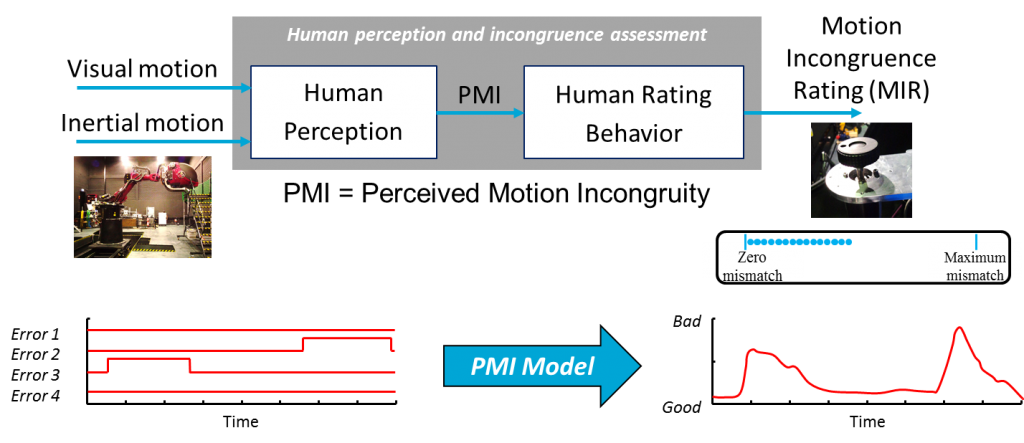Quantitative data-driven perception modeling that separates effects of different types of cueing errors in different axes.
To cope with the limited workspace of motion based simulators, motion cueing algorithms (MCAs) are used to map the desired motions onto the simulator workspace. Because of this necessary mapping, mismatches between visual and inertial cues will always occur. Certain, but not all, of these mismatches can cause the subject to perceive an incongruence between the visual and inertial motions. This perceived motion incongruence (PMI) in turn, causes a decrease in simulation realism or can even result in simulator sickness.
In contrast to traditional methods for minimizing PMI, e.g., MCA tuning with a subject matter expert, the goals of this project are:
- Develop a method to measure time-varying perceived motion incongruence between visual/inertial motion cues in motion simulation (PMI)
- Derive a model to predict this time-varying perceived motion incongruence
- Use the derived model to objectively improve motion cueing algorithms
In the first step of the project, a new (time-varying) measurement method has been developed to measure how the PMI in a motion-based simulator evolves over time: a continuous motion incongruence rating (MIR). Details and example results obtained from such continuous ratings can be found in first publications of this project, e.g., here.
The remainder of this project will use the continuous MIR data to develop data-driven perception models that can be used to predict PMI in simulators. These PMI prediction models also include the objective detection of different cueing error types (such as scaled, missing and false cues) from recorded simulator visual and motion cue time traces. The different detected cueing errors are then matched to measured MIR data to fit the perception model and determine quantitative weighing factors on individual cueing errors.



